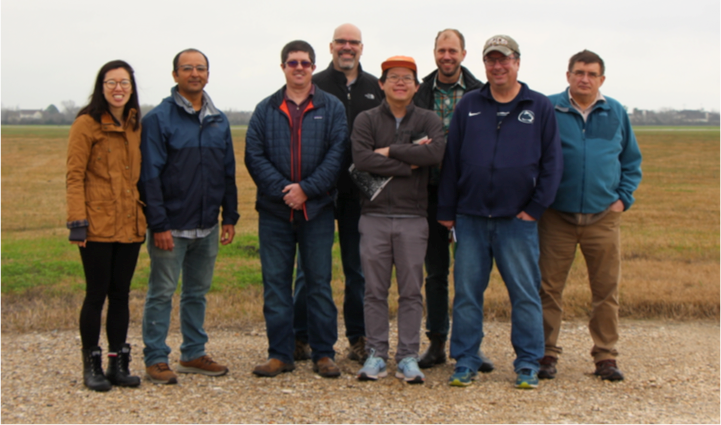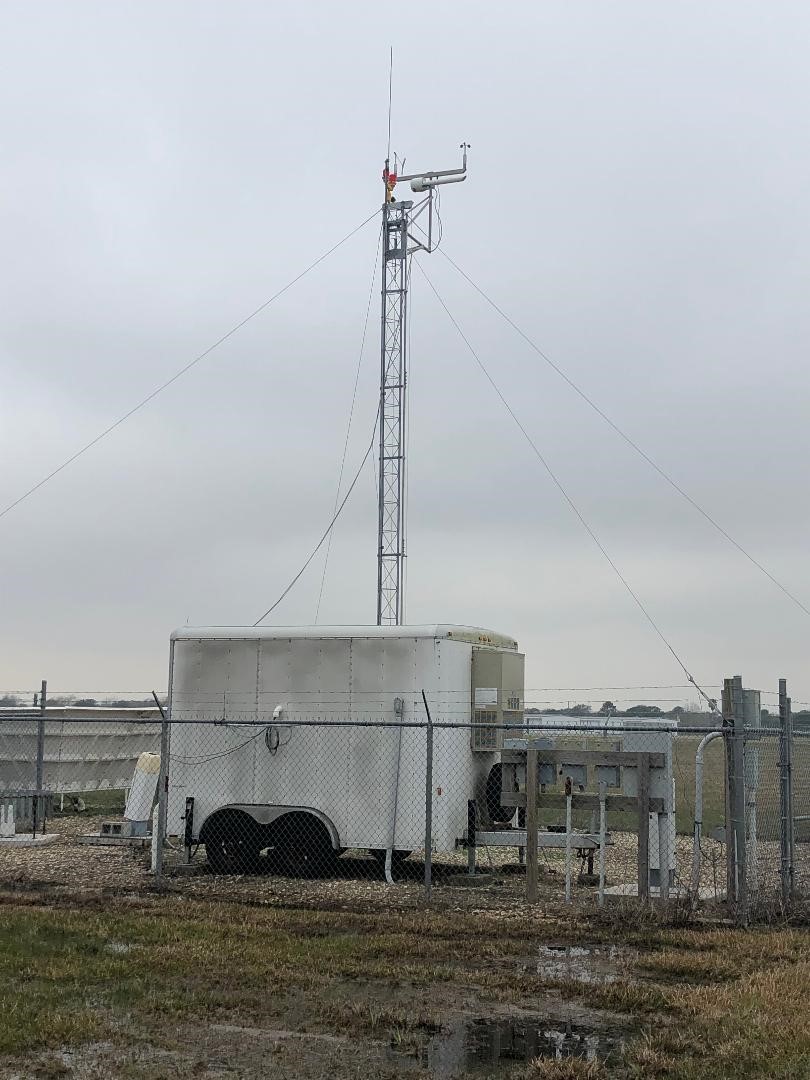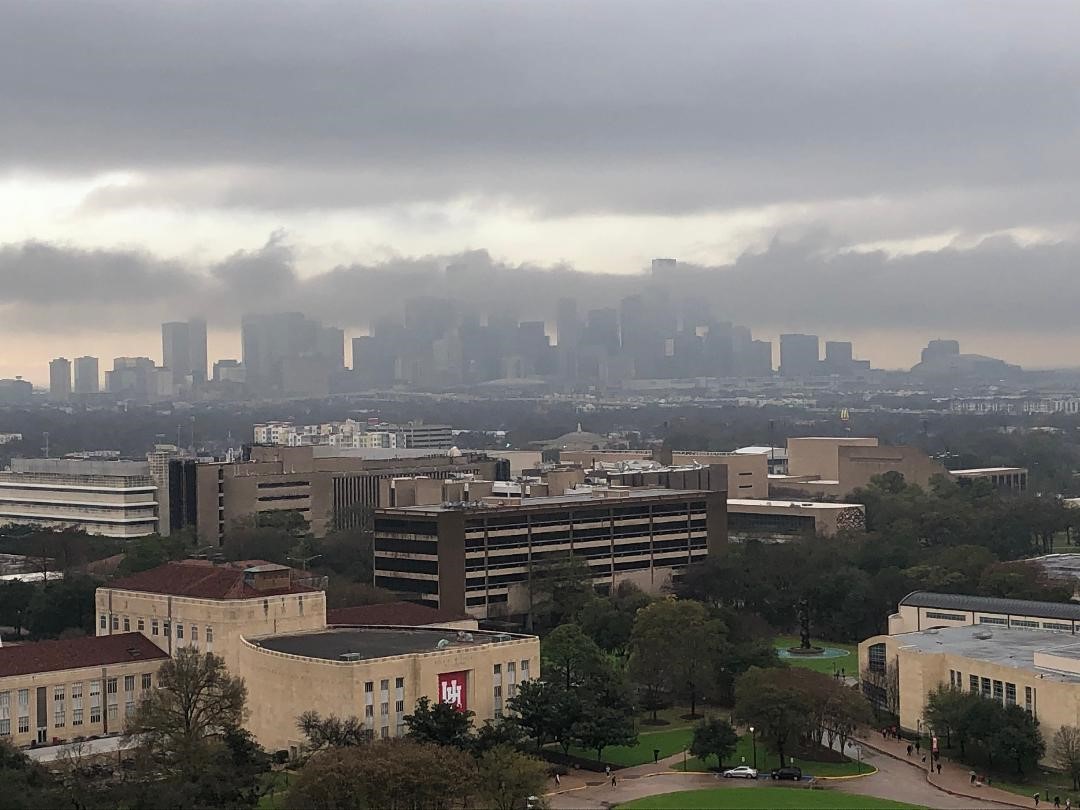Countdown to TRACER: Picking the Ideal Sites
Published: 23 March 2020
Editor’s note: Michael Jensen, a meteorologist at Brookhaven National Laboratory (BNL) in New York, is principal investigator for the upcoming TRacking Aerosol Convection interactions ExpeRiment (TRACER). He sent in this campaign update.

TRACER is scheduled to begin April 15, 2021, in the Houston, Texas, metropolitan region. With a little more than one year until the campaign starts, planning and preparations are moving into high gear.
One of the main tasks is the selection of the locations for the measurement sites. The TRACER Science Plan calls for the establishment of three sites in Texas. The main site—the location of the first ARM Mobile Facility (AMF1)—will be in an area that experiences heavy but variable aerosol loading, or total mass of particles in the atmosphere. The second-generation C-Band Scanning ARM Precipitation Radar (CSAPR2) will be deployed approximately 20‒40 kilometers (12‒25 miles) from the main site. Finally, ARM will deploy an ancillary site during the summer months to capture the environmental characteristics in a less polluted region southwest of Houston.
There are a number of considerations for the site selection, including science (e.g., minimal low-level blockage of radar and local sources of aerosol) and logistics (e.g., land availability and access to power).
On January 27 and 28, 2020, a group of TRACER scientists and ARM instrument mentors joined Heath Powers, AMF1 site manager from Los Alamos National Laboratory, and scientists from the University of Houston to visit some potential primary sites for TRACER and identify several backup locations.
Day One

On the morning of Monday, January 27, Heath and I, along with Chongai Kuang (BNL, TRACER co-investigator), Stephen Springston (BNL, ARM aerosol instrument mentor), and Andrei Lindenmaier (Pacific Northwest National Laboratory, ARM radar engineer), met up with James Flynn, Sergio Alvarez, and Subin Yoon from the University of Houston.
The group headed to the La Porte Municipal Airport, a potential home for AMF1 during TRACER. The airport grounds are already home to a Texas Commission on Environmental Quality monitoring station and a National Weather Service Automated Surface Observing System.
This site is secured by a fence and locked gate, should provide easy access to power, and includes a large field where the ARM Mobile Facility (AMF) trailers could be set up. Clear low-level sight lines would minimize ground clutter for the scanning cloud radars. Although the area experienced some standing water during Hurricane Harvey in 2017, it was very minor, and flooding should not be a problem with proper site preparation.
Scientifically and logistically, this site looks like it will work well. The next steps will be for Heath and the AMF operations team to speak with the airport operators and city managers about our plans.
The next stop, a city park in Manvel—a possible site for the CSAPR2—had a few radar clutter targets, including a cell tower, some radio antennas, and a group of trees to the north-northwest. Other than that, it seemed like an excellent location. (Note: The site has subsequently been removed from consideration.)
Finally, we visited some potential locations for the ancillary site southwest of Houston, in an area meant to be representative of relatively cleaner conditions compared with the AMF1 site. Looking for locations that were not directly downwind of the refineries and industry in Freeport, the team drove to locations in Guy and East Bernard. The landscape in this area is dominated by farmland with lots of open space. We noted local agricultural activities, major roadways, or other localized sources that might generate significant aerosol.
Day Two

On the second day, we visited a potential backup location for the CSAPR2. The Houston Southwest Airport would provide excellent security and land for the radar deployment. The airport staff were very welcoming, and they expressed a great deal of interest in the science we want to do. This is also a location of a sensor within the Houston-area Lightning Mapping Array, an important component of the TRACER campaign. We are looking at other locations as well.
We finished our visit with a trip to the Moody Tower Observatory on the University of Houston campus. Located atop a dormitory, the observatory has been used for previous field campaigns and ongoing measurements closer to downtown Houston. This location could provide opportunities for guest instrument deployments and other science activities during TRACER.
What’s Next?
Following the successful siting visits, the next steps will involve the AMF operations team speaking with local landowners and city managers to develop agreements for land use and operations. Assessments of environmental impacts and other logistical needs will need to be investigated. In some cases, additional locations may need to be considered.
Once the site locations are finalized, preparations will begin to bring the ARM instrumentation to the field.
Keep up with the Atmospheric Observer
Updates on ARM news, events, and opportunities delivered to your inbox
ARM User Profile
ARM welcomes users from all institutions and nations. A free ARM user account is needed to access ARM data.


















